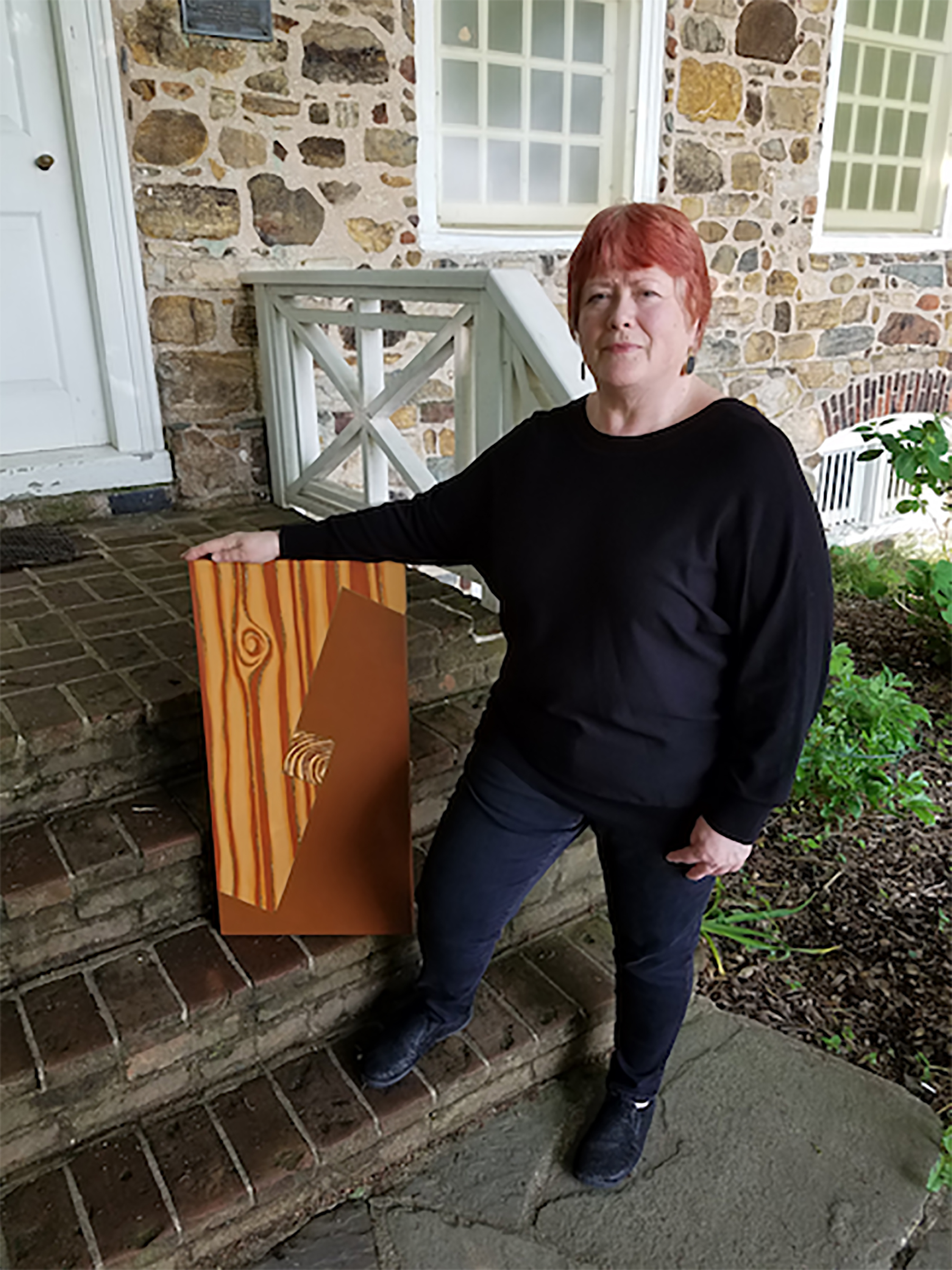Deborah Woodbridge
Seeking A Soulful Tottenville
Artist Deborah Woodbridge finds her role as caretaker of the Conference House an ideal one for the contrasting moments it offers to enjoy the serenity of nature punctuated by stimulating opportunities for human interactions. “I am not listening to sirens and noise going 24/ 7,” she reports, “and I cherish those intervals of complete quiet. Because the study of nature and science is integral to my work as an artist, I am continually drawing stimulation from living in the park. But I also meet some amazing people from all over the world who come to the Conference House, and I love exchanging ideas with them."
A Toronto native who moved to Staten Island in 1987, Woodbridge has been the caretaker of the Conference House since 2009, when she moved there from a rental home a few towns up the train line in Eltingville. She and her husband, Juan Rios, live in a two-bedroom extension to the house, formerly a summer kitchen and servant’s quarters.
Woodbridge’s duties as caretaker include helping with weekend tours of the house from spring to early winter and light maintenance. She also offers up her creative talents and organizational skills to assist the Conference House Board with cultural event planning. As part of her volunteer efforts she helps plan and run the Conference House Art Expo. Assembling the raffle baskets for the House's spring and fall teas gives her a chance to “vent” her artistic talents. In the fall she also helps plan and run the Harvest Festival.
The trellised colonial kitchen garden contiguous to the house, tended by Rios, a professional photographer, draws great interest from park visitors during the growing season. He generously shares graftings from a large fig tree. “We have a number of offspring from the tree sprinkled around the New York area,” says Woodbridge.
Woodbridge teaches decorative arts workshops at the Conference House—a class last year in floor cloth painting brought people from all over Staten Island and beyond to Conference House Park. In neighboring Charleston she has restored the lobby lincrusta and the gilding in some the rooms of the fabled Kreischer Mansion. Earlier in her artistic career she designed patterns of historic costumes for Butterick Vogue, McCall’s, and Simplicity pattern companies based upon extant garments in the collection of the Metropolitan Museum of Art and other historic sites and institutions.
These days Woodbridge devotes her time to her nonrepresentational art, which has been shown in galleries and is housed in private collections. “Like most artists,” she explains, “I have the real need to do my craft.” Her keenest interest is in exploring how art can communicate an understanding of science and nature and how humans interact with both. “I might have become a scientist myself if I had not been the daughter of an artist [her father was the Canadian sculptor and painter Gray H. Mills],” she reports.
For a recent exhibit at Conference House Park exhibition, titled “Resiliency and the Elements,” Woodbridge was inspired to create two paintings—one an abstract depiction of a bioswale, and another of water rushing over a falls. She is currently working on a 3-dimensional representation of aerosols—the beneficial compounds that trees emit. “I am always hoping to spark conversation around something that might otherwise be a dry topic,” she says. As she states on her website: “I am inspired and motivated in my work by the interconnectivity of the molecular, the universal, the philosophical— of people, ideas and images that I encounter in my life's journey.”
Although Woodbridge laments that Staten Island has for many years been the city’s forgotten borough, she senses that may be changing. The possibility of that change fills her with both a sense of hope but also trepidation. “I think we are about where Brooklyn was about 10 years ago," she says, noting that she looks forward to careful development but fears the wrong kind, especially given the Staten Island’s sorry track record in that regard.
She would love, for instance, to see more celebrations of the arts and the artistic community. Although she has been accepted into the residency program for sculpture at the Makers Space in Stapleton, she says she would be “ecstatic” to see a space in Tottenville dedicated to “pulling people into the arts, whether school kids or elderly or any demographic.”
Woodbridge does long for more ways to be involved in the community. She had anticipated that living in a village with such rich history, there would be a nucleus of people who would want to interact around it and has in fact found many of those connections at the Conference House. “But in terms of a local artist community there really isn’t much of one here,” she says. “I am affiliated with Brooklyn and North Shore artist organizations but here I would like to see something happen so I wouldn’t have to travel an hour to do something. That is the thing about Staten Island, it is kind of big and difficult to traverse!”
She is especially excited about the long-awaited reconstruction of the Conference House Park Pavilion. A ground breaking was held this spring. “It will be a wonderful place for people to get to meet each other out by the water,” she anticipates. “Its predecessor was still in fine and good order when I first moved here, and it was great to go down there in the summer and just sit, experience the breezes, and talk to neighbors. Now that the Pavilion is being rebuilt I am so excited because that was one of the things that made this park feel alive. It’s the kind of development that feeds the soul.”
Deborah Woodbridge on the steps of the Conference House, whose timbers inspired the art she is holding.
The original Conference House Park Pavilion



